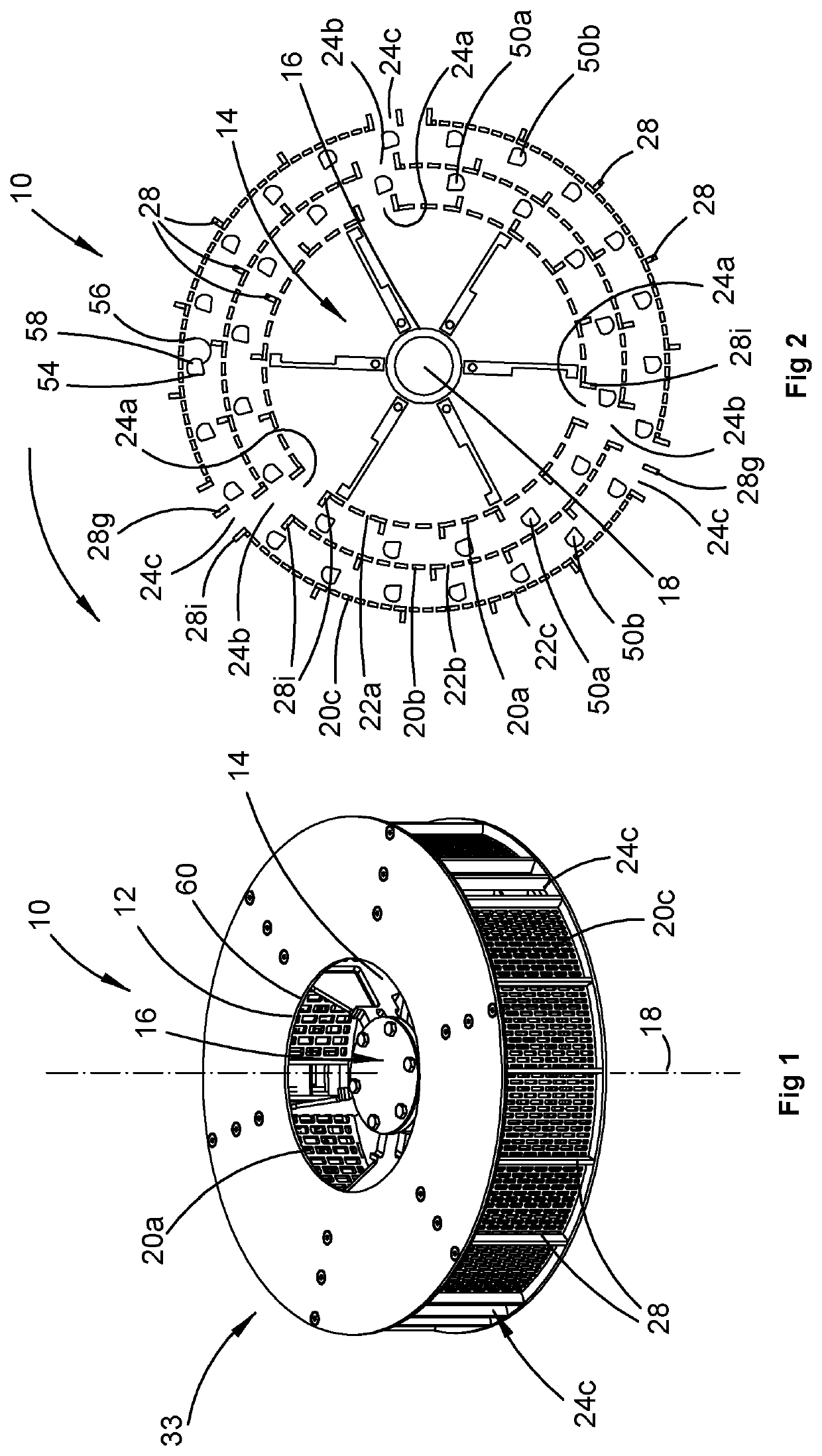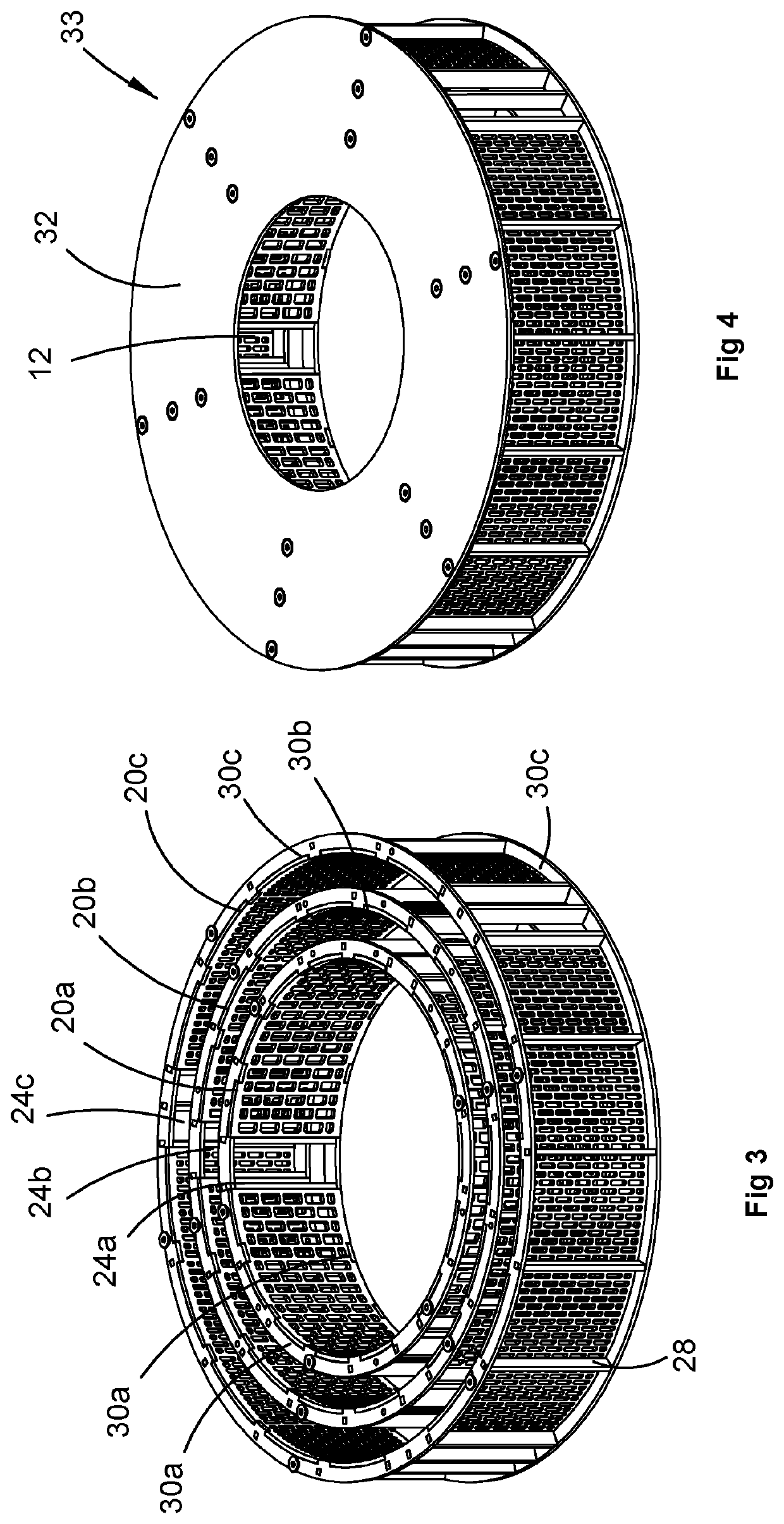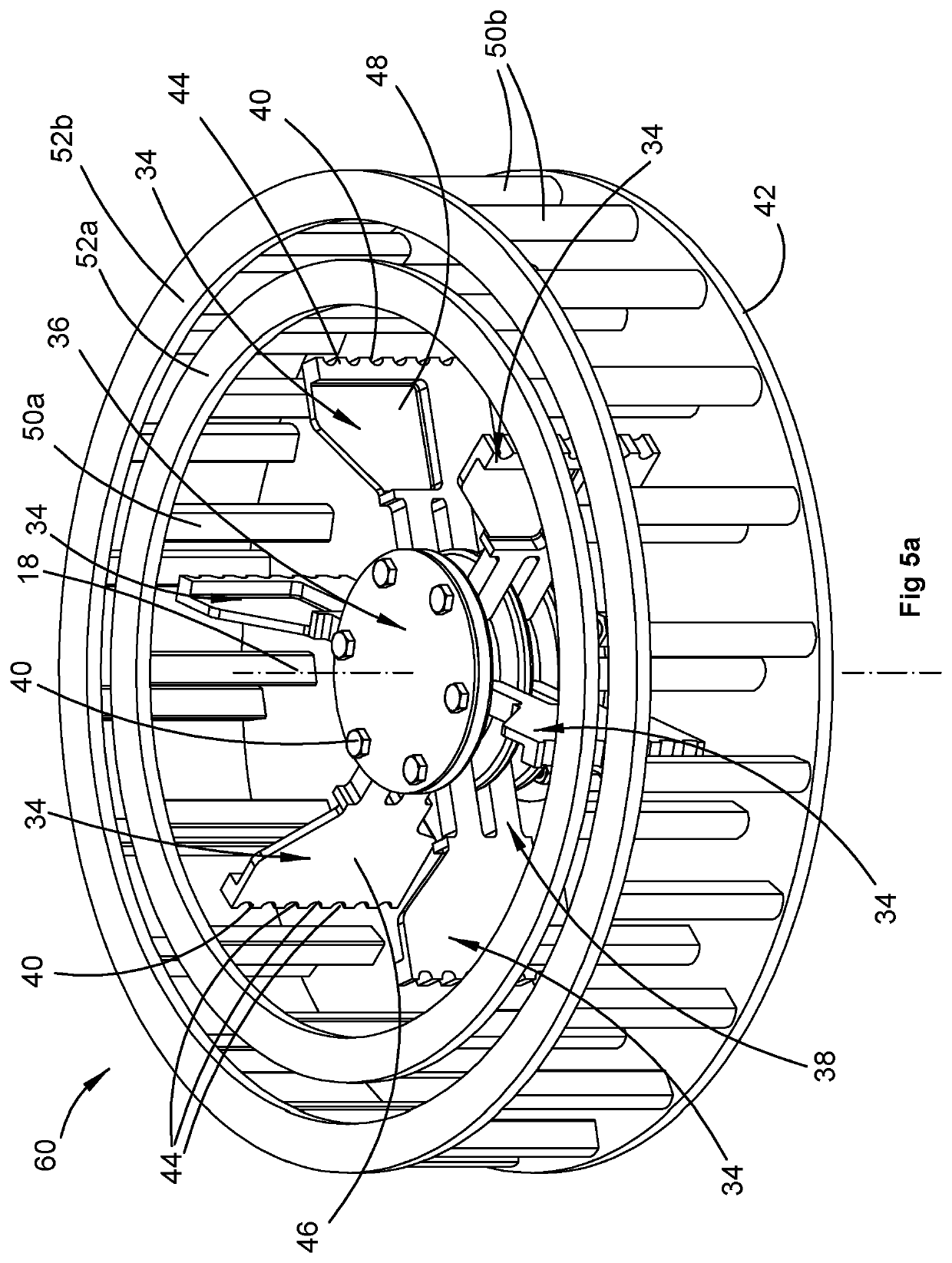An impact mill and a residue processing system incorporating same
a technology of impact mill and residue, which is applied in the direction of mowers, weed killers, threshers, etc., can solve the problems of limiting the food production capacity of agricultural areas around the globe, one of the biggest threats to global food security, and the biggest constraints and costs, so as to reduce the mass flow rate
- Summary
- Abstract
- Description
- Claims
- Application Information
AI Technical Summary
Benefits of technology
Problems solved by technology
Method used
Image
Examples
Embodiment Construction
[0090]With reference to the drawings there is shown an embodiment of the disclosed impact mill 10 (FIGS. 1,2 and 6). The Impact mill 10 has an inlet 12 for material to enter the mill and an impact mechanism 16 arranged to rotate about a rotation axis 18. The impact mechanism 16 is operable to pulverise the material after entering through the inlet 12 and discharges the pulverised material through an outlet 154 (FIG. 13a). As explained in greater detail later in this specification the impact mill 10 may include:[0091](a) one or more blockage sensors Bj arranged detect blockage in or reduced mass flow rate of material through the mill; or[0092](b) one or more vibration sensors V1, V2 (FIG. 7a) arranged to sense vibration arising from rotation of the impact mechanism 16 about the rotation axis 18; or[0093](c) both one or more blockage sensors Bj and one or more vibration sensors V1, V2.
[0094]As seen in FIGS. 1, 2 and 6 an embodiment of the disclosed an impact mill may be in the form of...
PUM
 Login to View More
Login to View More Abstract
Description
Claims
Application Information
 Login to View More
Login to View More - R&D
- Intellectual Property
- Life Sciences
- Materials
- Tech Scout
- Unparalleled Data Quality
- Higher Quality Content
- 60% Fewer Hallucinations
Browse by: Latest US Patents, China's latest patents, Technical Efficacy Thesaurus, Application Domain, Technology Topic, Popular Technical Reports.
© 2025 PatSnap. All rights reserved.Legal|Privacy policy|Modern Slavery Act Transparency Statement|Sitemap|About US| Contact US: help@patsnap.com



